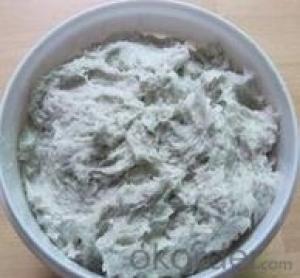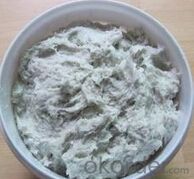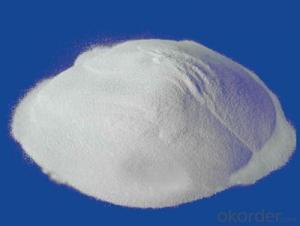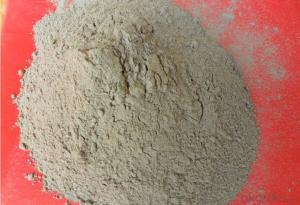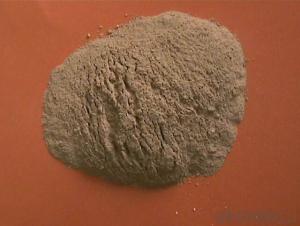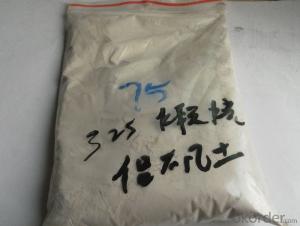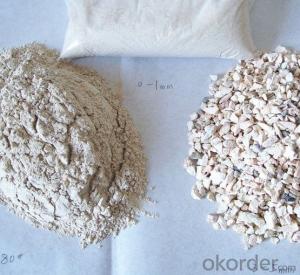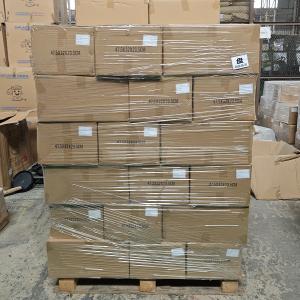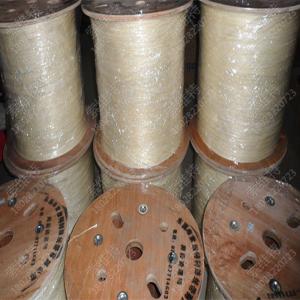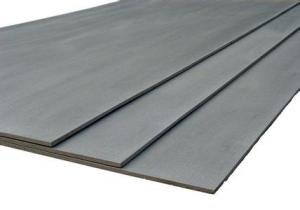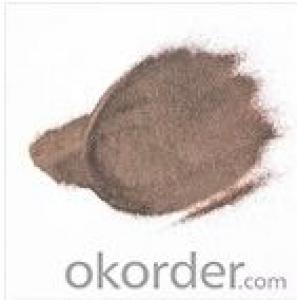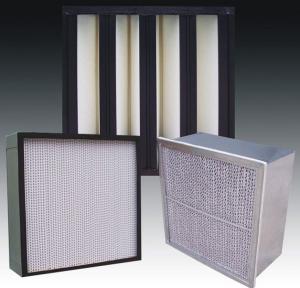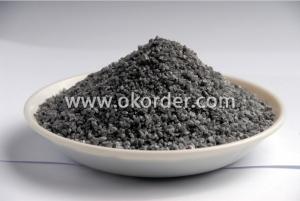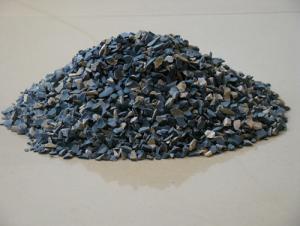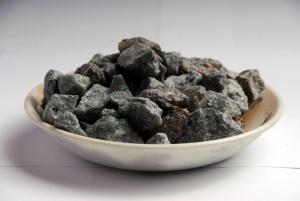High Temperature Refractory Paste Mortar Wet
- Loading Port:
- China Main Port
- Payment Terms:
- TT OR LC
- Min Order Qty:
- -
- Supply Capability:
- -
OKorder Service Pledge
OKorder Financial Service
You Might Also Like
Specifications
High temperature refractory paste mortarHigh binding strength
Used for a variety of high-temperature kilns.
Specifications
High binding strength
can according to customers' requirements.
Used for a variety of high-temperature kilns.
High temperature refractory paste mortar, refractory brick mortar , refractory mortar paste
Characteristics
- High binding strength
- Good structural integrity
- Good gas tightness
- Resistance to erosion
- Long working time
- High loading softening temperature
- Low shrinkage at high temperature
- Good slag resistance
- Small gap for construction
- Easy for mixing and construction
- Small shrinkage after firing
Tech Data
Item | High temperature series | Anti-acid series | ||
I | 2 | 3 | 4 | |
Temperature (°C) | 1100-1400 | 1600 | 1750-1800 | 900-1000 |
Condition | Slurry | Slurry | Slurry | Slurry |
Drying shrinkage (%) | 2-3 | 2-3 | 1-3 | 2-3 |
Method of use | Laying. Poste, Repair, Daub | Laying. Poste, Repair, Daub | Laying. Poste, Repair, Daub | Laying. Poste, Repair, Daub |
Application range | 1. Ceramic fiber products. 2. Bubble products. 3.Heat insulation fire bricks | 1. High alumina products. 2. Fire clay products. | 1.Corundum products 2. Alumina products. | Anti-acid products |
Typical Application
1. Building for industrial furnaces and kilns.
2. Building for refractory bricks and heat insulation bricks.
3. Binding for ceramic fiber blanket and board.

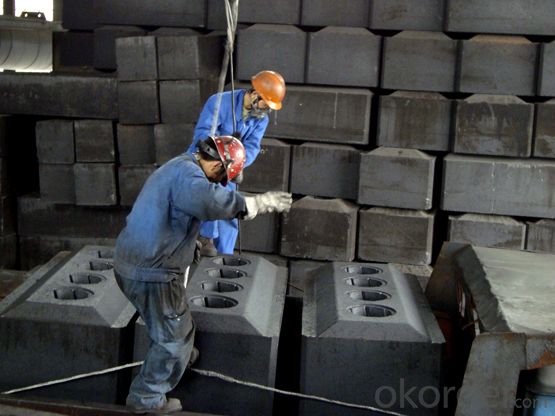
- Q: Where is the production of refractory manganese alloy manufacturers? Manganese is recommended between 63 and 70!
- The cut is relatively transparent if you jam, we have also used silicon manganese alloy
- Q: What is acid refractory material?
- In fact, with the content of zirconia refractory multiple theory should also be acid refractory
- Q: Who can tell me about the foundry refractory materials?
- The classification of refractories commonly used in casting and smelting: refractory bricks: siliceous bricks, high alumina bricks, corundum bricks, magnesia bricks, magnesia-alumina bricks, magnesia-carbon bricks,etc. shapeless refractory materials: ramming?mass, castable refractory, refractory cement, silica sand, magnesite, etc.
- Q: What's the classification of refractory material?
- Magnesium aluminum is complex and mainly seeing what classification standard is like according to the appearance shape can be divided into two categories, setting and not setting according to the acid alkali can be divided into acidic, magnesia, high aluminum, ramming expected, spinel, spray coating, plastic, just the quality of the jade, daub material according to the chemical composition is divided into, such as clay, neutral and alkaline according to the operation mode can be divided into different castable, magnesium, calcium, magnesium chrome
- Q: What kind of refractory materials are used in the intermediate frequency furnace?The domestic boric acid can be used as a lining?, how much is the rate?
- The variety of refractory materials for intermediate frequency furnace is mainly made of aluminum and silicon, both shaped and unshaped refractory materials are available. I have no ideas what you said boric acid, I’ve never seen that boric acid was used as an additive.
- Q: What are the characteristics of clay refractory materials?
- Clay refractory has excellent performance in anti fatigue. The fatigue strength of the general metal is 50% ~ 40 of the tensile strength, and some composite materials can be as high as 70 ~ 80%. The fatigue fracture of the composite is from the matrix, which is gradually extended to the interface between the fiber and the matrix. Therefore, the composite material has omen before destruction, and it can be checked and remedied. Fiber composite material also has good performance in anti vibration fatigue. The fatigue life of The helicopter rotor made of composite material is longer that made of metal. I hope my answer will help you!
- Q: What can red stone refractory do?
- In severe cases, the resistance to high temperature without softening down the Celsius temperature. Refractory materials are widely used in metallurgy, chemical, petroleum, machinery manufacturing, silicate, power and other industrial fields, the largest amount of metallurgical industry, accounting for 50% ~ 60% of the total output. Chinese use less impurity clay in more than 4000 years ago, firing pottery, and have been able to cast bronze. In the Eastern Han Dynasty (AD 25 ~ 220) have been used to make clay refractory kiln firing porcelain material and sagger. At the beginning of twentieth Century, the development of refractories to high purity, high density and ultra high temperature products, while developing completely without firing, small consumption of unshaped refractory materials and high refractory fiber (160 for industrial furnace refractories above 0 DEG C). The former, such as alumina refractory concrete, is often used in large chemical plants, ammonia synthesis plant, two - stage reformer furnace wall, the effect is good. Since 50s, the rapid development of atomic energy and space technology, the development of new energy technology, requires the use of special refractory material of high temperature resistance, corrosion resistance, thermal shock resistance, erosion has excellent properties, such as melting point above 2000 DEG C, oxide refractory compounds and high temperature composite refractory materials.
- Q: What is the biggest difference between refractory bricks and clay refractory bricks? Where can I find information on the refractory bricks?
- You can look up knowledge manual of refractory material to find phosphatic material, etc. Xinjiang refractory bricks, castable refractory, refractory material, silicious, corundum and alumina-magnesia: High alumina and clay refractory bricks can be divided into
- Q: Refractory inquiries
- Acid refractory materials are commonly used brick and clay brick. Silica is silica containing more than 93% silica products, raw materials used in silica, silica and other waste, the acid resistance of slag erosion ability, high load softening temperature, volume shrinkage after repeated burning, or even a slight expansion; but it is vulnerable to the erosion of basic slag, low thermal shock resistance. The brick is mainly used for thermal equipment of glass furnace, coke oven, acid furnace etc.. Clay brick with refractory clay as the main raw material, containing 30% to 46% of alumina, weak acid refractory material, heat shock resistance, resistance to acid slag, widely used
- Q: Who knows about the B-level fireproof insulation materials?
- Commonly used B-level materials: Molding polystyrene foam, extruded polystyrene board, gelatine powder polyphenyl granule heat insulating slurry. Although the polyurethane is not the commonly used material, but the 9mm composite of monolayer gypsum board and PU insulating material can reach B-level.
Send your message to us
High Temperature Refractory Paste Mortar Wet
- Loading Port:
- China Main Port
- Payment Terms:
- TT OR LC
- Min Order Qty:
- -
- Supply Capability:
- -
OKorder Service Pledge
OKorder Financial Service
Similar products
Hot products
Hot Searches
Related keywords
